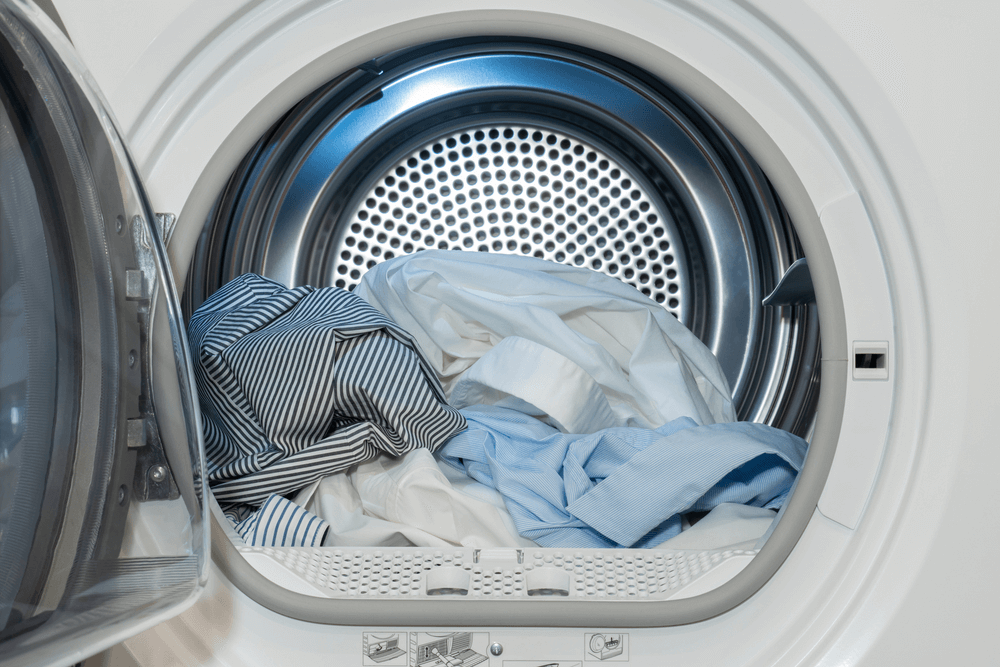Washing machines are an essential part of our daily lives, but what happens when your Amana washer gets stuck in sensing fill mode? Not only can this issue be frustrating, but it can also disrupt your laundry routine.
In this article, we will explore the common causes of an Amana washer stuck on sensing fill and provide troubleshooting steps to resolve the issue. We will also discuss preventive measures to avoid facing this problem in the future.
Understanding the Sensing Fill Mode
The sensing fill mode in an Amana washer is designed to detect the correct water level for the selected cycle. It ensures that the washer fills with the right amount of water to clean your clothes efficiently. However, when the washing machine gets stuck in this mode, it doesn’t proceed with the washing process, leaving your clothes unwashed.
Common Causes of Amana Washer Stuck on Sensing Fill
Here, we’ll outline the issues and provide a guide to fix each error:
Common issues
Faulty water inlet valve
In the function of a washing machine, the water inlet valve controls the flow of water. So, if this valve is damaged or malfunctioning. It may prevent the washing machine from filling with water, causing it to be stuck in sensing fill mode.
Malfunctioning Pressure Switch
Normally, the pressure switch is responsible for detecting the water level inside the drum. So, if it fails or malfunctions, it may not accurately detect the water level. This could cause the washing machine to remain in sensing fill mode.
Malfunctioning Shift Actuator
The shift actuator plays a crucial role in shifting the washing machine between different cycles. Therefore, if it becomes defective or fails, it can prevent the washing machine from moving between cycles. This could cause it to remain in sensing fill mode.
Defective Lid Switch
We come up to the lid switch, this function ensures that the washer lid is closed during operation. A faulty lid switch can prevent the washing machine from proceeding with the washing cycle. This causes it to be stuck in sensing fill mode.
Damaged Drive Motor
Normally, the drive motor powers various components in the washing machine, enabling it to perform the washing cycle. If the motor is malfunctioning or damaged, it may hinder the washer’s ability to proceed with the washing cycle, causing it to be stuck in sensing fill mode.
Overloading the washer
Moreover, filling your washer with too many clothes can make it difficult for the sensors to accurately detect the water level. An overloaded washer can cause it to get stuck in sensing fill mode.
Blocked Inlet Screen
The inlet screen is a small mesh filter located at the water inlet valve that helps prevent sediment and debris from entering the washer. Over time, the screen can become clogged, restricting water flow into the washing machine. So, this can cause your washer to remain in sensing fill mode.
Sensor or Control Board Issues
Normally, the sensors and control board in your washing machine work together to regulate and monitor the sensing fill process. So, these components have problems, it can affect the washer’s ability to properly detect water levels. Additionally, this also can lead to your washer getting stuck in sensing fill.
How solve the above issues
To solve the above issues, except for overloading the washer and blocked inlet screen problems, follow the step-by-step process outlined below:
Step 1: Before starting, ensure that the washing machine is unplugged from the power source and the water supply is turned off. This will protect you from potential electrical hazards and water damage.
Step 2: Locate the component and carefully remove the control panel or top cover using a screwdriver, if necessary. Keep track of any screws or clips removed for later reassembly.
Refer to your washer’s manual to determine the exact location of the components within your specific model.
Step 3: You continue to check the components you suspect are causing the issues for any visible signs of damage. This includes cracks, corrosion, or discolored parts.
Additionally, ensure that the wiring connections are secure and free from damage. If you find any problems, consider replacing the faulty components with new ones.
If you have a multimeter, you can test the pressure switch for proper functioning. Consult your washer’s manual or seek the assistance of a professional technician for guidance on testing the components.
Step 4: Once you have completed the inspection and any necessary replacements. Should carefully reassemble the components. Make sure to replace any screws or clips that were removed earlier.
Step 5: Plug the washer back into the power source and turn on the water supply. Run a test cycle to ensure the issue has been resolved and the washer is functioning properly.
How to fix overloading the washer and blocked inlet screen problems:
First, to prevent overloading the washer, always follow the manufacturer’s guidelines regarding load size. Avoid filling the washer with too many clothes. Because this can make it difficult for the sensors to accurately detect the water level. Distribute the load evenly and avoid mixing heavy items with lightweight items.
Second, to clean a blocked inlet screen, first, turn off the water supply and unplug your washer. You should disconnect the hoses from the water inlet valve and remove the screen using needle-nose pliers.
Also, clean the screen with a soft brush and water, removing any debris or sediment. Reinstall the screen, reconnect the hoses, and restore the power and water supply.
Step-by-Step to Resolve Amana Washer Stuck on Sensing Fill
Step1: Check the Water Supply
First, you should make sure the water supply valves are fully open. Additionally, allowing water to flow into the washing machine.
Next, check the water supply hoses for any kinks or twists that might restrict water flow. If you find any, straighten the hoses to resolve the issue. Moreover, visually inspect the hoses for any visible damage or wear. If you notice any issues, consider replacing the hoses.
Step 2: Inspect the Water Inlet Valve
In the first step, unplug your washer from the power source to ensure your safety while working on the appliance.
Next, turn off the water supply to the washing machine and disconnect the water supply hoses. Besides, should locate the water inlet valve, which is usually found at the back of the washing machine.
In the process, check the valve for any visible damage, such as cracks or corrosion. If you suspect a defect, you might need to replace a new one.
Step 3: Verify the Pressure Switch
To start this process, you should ensure the washer is unplugged and the water supply is turned off first. Afterward, locate the pressure switch, which is typically found inside the washer’s control panel or near the drum. Moreover, inspect the pressure switch for any visible damage or wear. If you suspect a malfunction, consider replacing the pressure switch.
Additionally, you need to check the pressure switch’s hose for any clogs or kinks. If you find any, clear the blockage or straighten the hose to resolve the issue.
Step 4: Examine the Sensor and Control Board
First, it’s important to ensure your washer is unplugged and the water supply is turned off. Moreover, you should carefully remove the washer’s control panel to access the sensors and control board.
Additionally, check them for any signs of damage, wear, or loose connections. If you notice any issues, you might need to replace the affected components. Afterward, should reassemble the control panel and plug in your washer to test if the issue is resolved.
Step 5: Reset the Washer
You start the process with unplug the washer from the power source. While the washing machine is unplugged, press and hold the “Start” or “Power” button for about 30 seconds. After that, plug the washer back into the power source and turn it on. This should reset the system, potentially resolving the sensing fill issue.
Moreover, If these troubleshooting steps do not resolve the issue. It’s recommended to consult a professional appliance technician for further assistance.
Preventive Measures for Amana Washer Stuck on Sensing Fill
- Regularly clean the inlet screen to ensure proper water flow.
- Avoid overloading the washer with clothes, as this can interfere with the sensing fill process.
- Regularly inspect and maintain the water supply lines to prevent clogs and kinks.
- Periodically check the pressure switch, sensors, and control board for proper functioning.
- Schedule routine maintenance for your washing machine to catch any issues early on.
Conclusion
An amana washer stuck on sensing fill mode can be a frustrating issue, but by understanding the common causes and following the troubleshooting steps provided, you can resolve the problem and get your washing machine back on track.
Additionally, taking preventive measures can help avoid this issue in the future, ensuring your laundry routine runs smoothly.
FAQs
A faulty water inlet valve can cause a slow water fill, no water fill, or water continuously filling the washer. If you’re experiencing any of these issues, it might be due to a faulty water inlet valve.
Some troubleshooting steps, such as checking the water supply and resetting the washer, can be done by yourself. However, for more complex issues involving internal components, it’s best to consult a professional.
Using a washer stuck on sensing fill mode can lead to inefficient washing. This also has potential damage to your clothes and further damage to the washer’s components.







